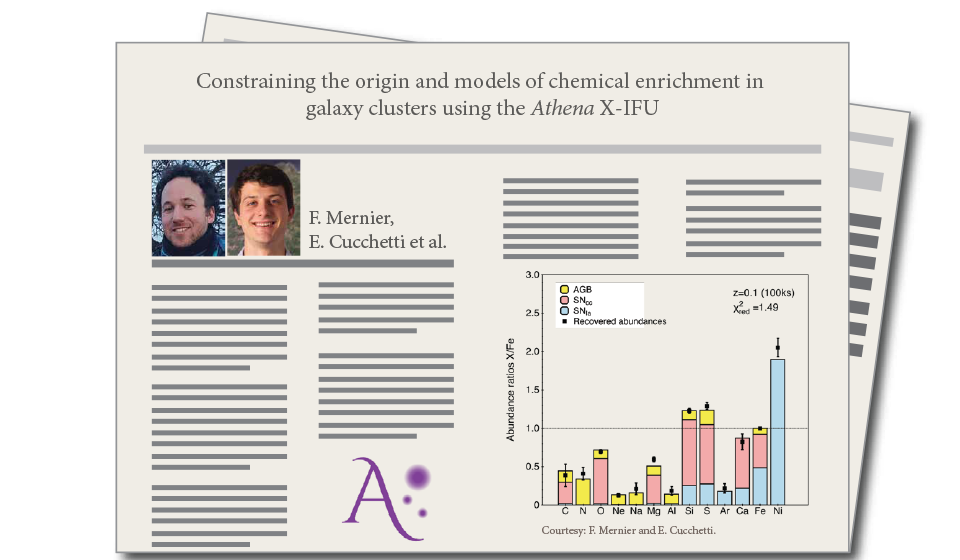
Constraining the origin and models of chemical enrichment...

By François Mernier and Edoardo Cucchetti
In addition to galaxies and dark matter, galaxy clusters are also filled with hot gas (10 to 100 million K), accounting for 70-90% of the total "visible" matter, and observable through X-ray telescopes. Quite amazingly, this "intracluster medium" contains not only H and He (which were created a few minutes after the Big Bang), but also a significant amount of heavier elements such as C, N, O, Mg, Si, Ca, Fe, and Ni, whose emission lines peak in the X-ray spectra of these clusters. These elements could only be created in the burning cores of stars or during supernovae explosions. As clusters are gravitationally bound structures, this chemical enrichment must have occurred within the cluster galaxies before spreading out - and getting trapped - within the entire cluster volume. The presence of these elements thus constitutes a fossil record of the explosion of billions of supernovae over the entire cosmic time. Additionally, stellar populations and their (Type Ia and core-collapse) supernovae remain poorly understood, and currently competing theoretical models also predict different element yields. Therefore, measuring the chemical composition of the intracluster medium (or, more specifically, their abundance ratios with respect to a reference element such as Fe) gives us crucial information on the supernova models to favour, ultimately allowing us to better understand stars, supernovae, and the mechanisms governing their enrichment inside and outside galaxies.
In this paper, we demonstrate how the future mission Athena, thanks to the exquisite spectral resolution and sensitivity of its key instrument X-IFU, will revolutionise our knowledge of stars and supernovae by simply measuring the elemental abundances in the X-ray spectra of galaxy clusters. We show in particular that, using typical cluster observations, abundance measurements with Athena/X-IFU will provide a level of constraints on enrichment models that is beyond achievable with current instruments.

